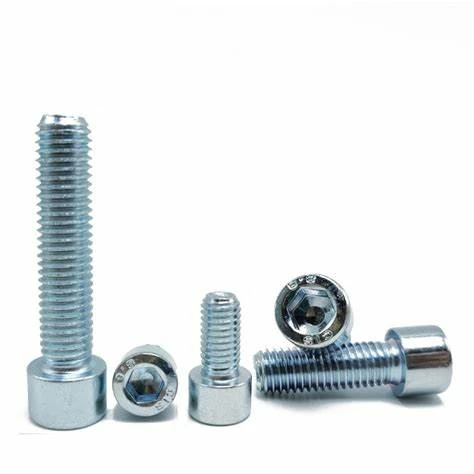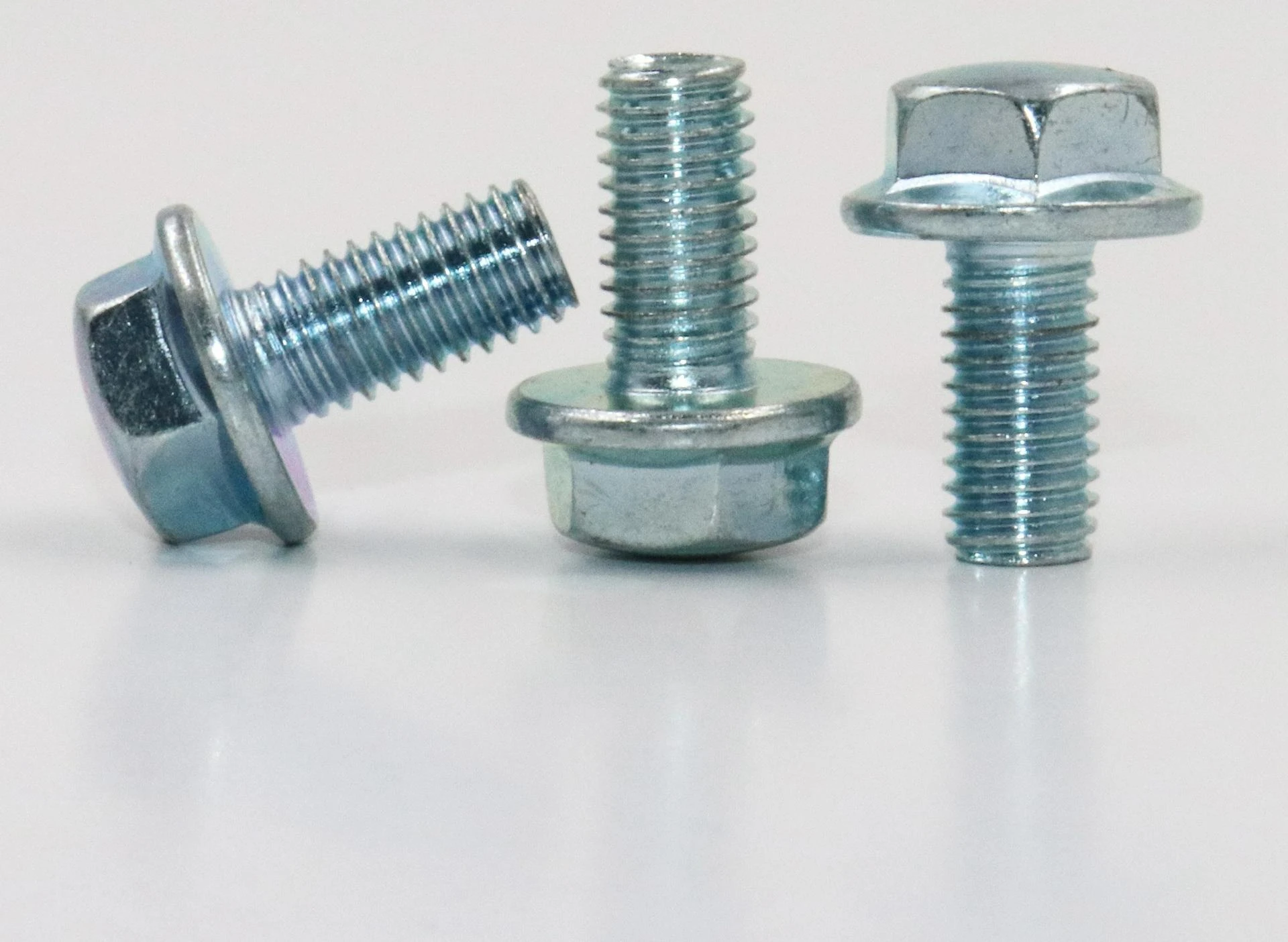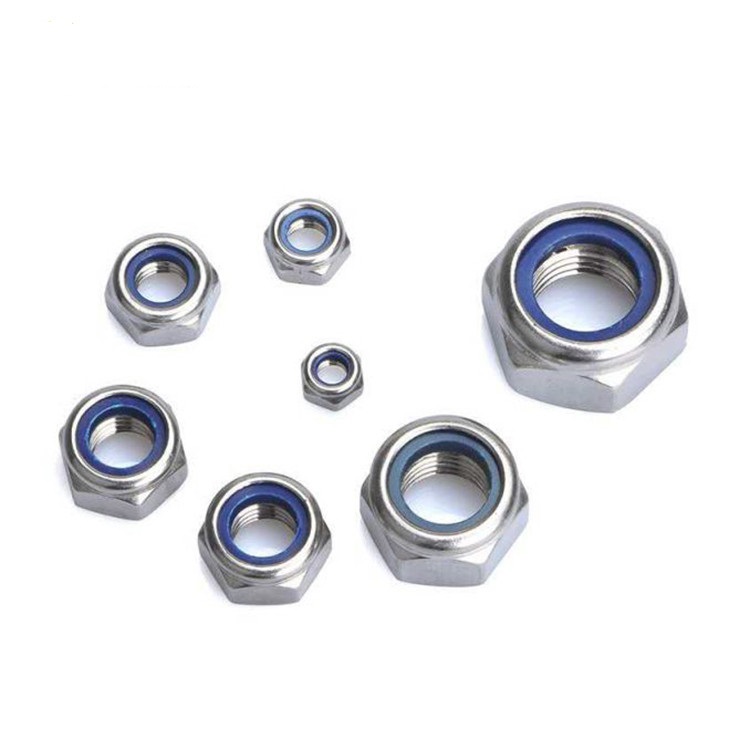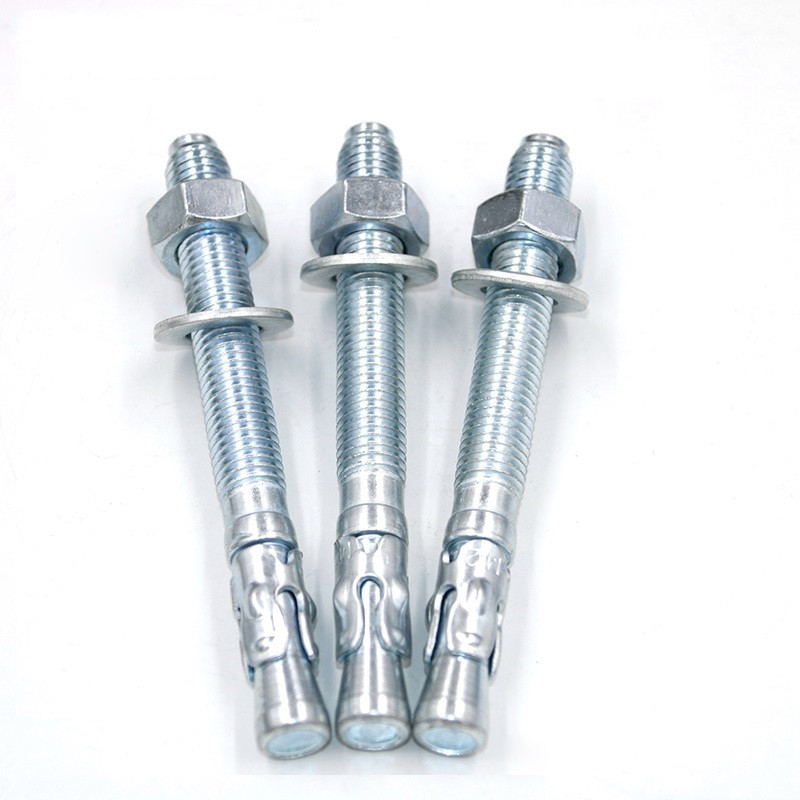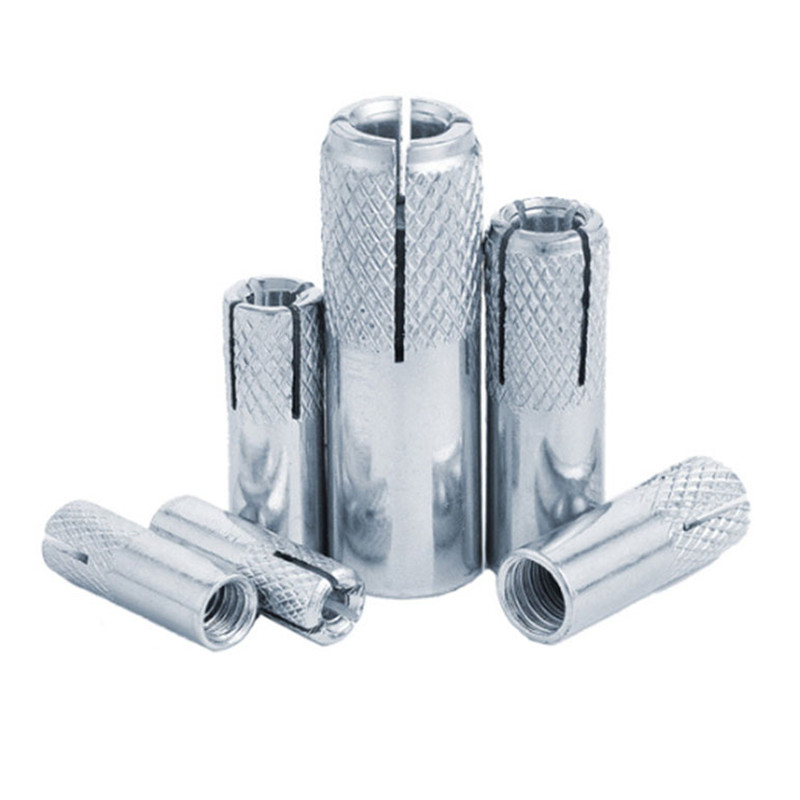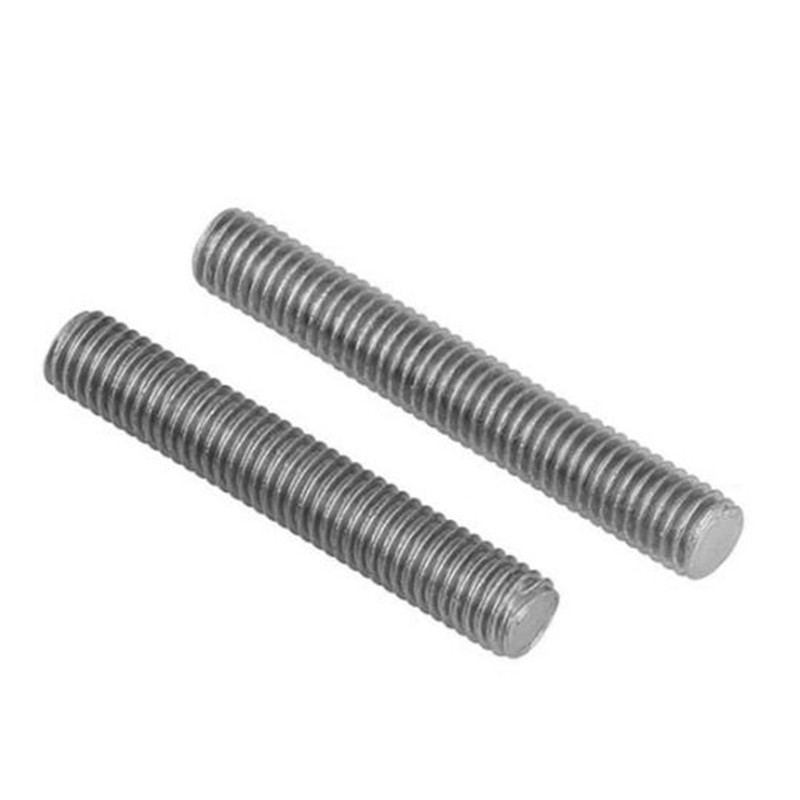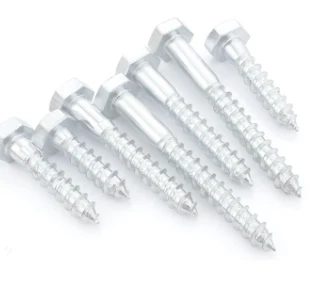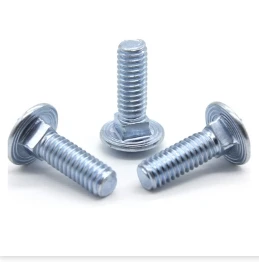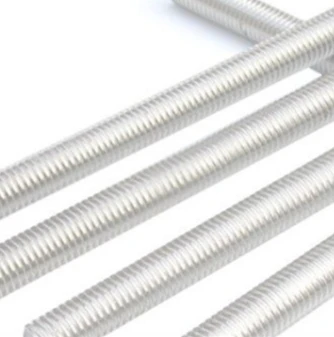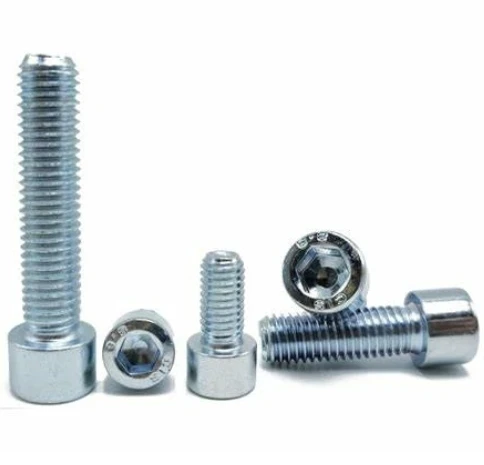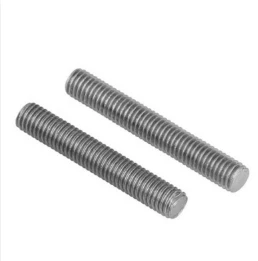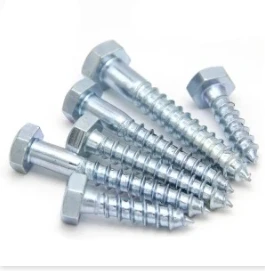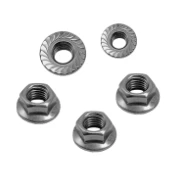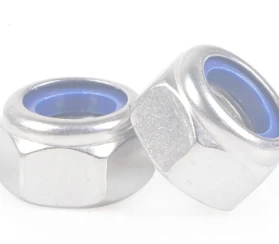Advancing Industrial Fastening with DIN933 Hex Bolts: A Comprehensive Overview
In the intricate world of industrial engineering, the selection of appropriate fasteners is paramount, directly influencing structural integrity, operational longevity, and overall system reliability. Among the myriad options, the DIN933 Hex Bolt stands out as a foundational component, indispensable across virtually every sector from heavy machinery and construction to petrochemical and automotive industries. Its design, characterized by a fully threaded shank and a hexagonal head, adheres to rigorous German Industrial Standards (Deutsches Institut für Normung), specifically DIN 933, which dictates precise dimensions and material specifications to ensure consistent performance and interchangeability. The global market for industrial fasteners is projected to reach approximately $110 billion by 2027, driven by burgeoning infrastructure development and manufacturing growth, further solidifying the critical role of standardized components like the DIN933 Hex Bolt. This robust fastener is celebrated for its ease of installation, high clamping force, and exceptional shear and tensile strength, making it the preferred choice for demanding applications where secure, vibration-resistant connections are non-negotiable. Understanding its nuanced technical specifications, manufacturing intricacies, and diverse application landscapes is crucial for B2B decision-makers aiming to optimize their supply chains and enhance project outcomes. This article delves deep into the attributes that make this fastener a cornerstone of modern industrial assembly, exploring its technical parameters, manufacturing processes, and strategic advantages.

The demand for high-performance fasteners is continually evolving, driven by innovations in material science and increasing performance expectations in extreme environments. While classic carbon steel variants, such as the mild steel hex bolt, remain workhorses for general-purpose applications due to their cost-effectiveness and good mechanical properties, there's a growing inclination towards advanced materials like stainless steel grades, exemplified by the DIN 933 A2 stainless steel bolts. These specialized versions offer enhanced corrosion resistance, crucial for marine environments, chemical processing plants, and outdoor infrastructure, where exposure to harsh elements can compromise structural integrity over time. The versatility of the DIN933 Hex Bolt standard allows for adaptation across a spectrum of material grades, ranging from low carbon steels (e.g., strength class 4.8) to high-strength alloy steels (e.g., strength class 10.9) and various stainless steel types. This adaptability ensures that engineers can specify a bolt perfectly matched to the specific load requirements, environmental conditions, and expected service life of their assemblies. Furthermore, considerations such as surface coatings—like zinc plating for improved corrosion resistance or hot-dip galvanizing for cathodic protection—add another layer of complexity and customization to meet bespoke project specifications. The consistent adherence to the DIN 933 standard guarantees that these bolts, regardless of their specific material or coating, will fit and perform as expected within a globally recognized framework, simplifying procurement and ensuring interoperability across different components and systems.
Technical Deep Dive: Standards, Grades, and Performance Metrics
The precision and reliability of the DIN933 Hex Bolt are fundamentally rooted in adherence to the DIN 933 standard, which meticulously defines its geometric characteristics and performance requirements. This standard specifies the full threading from the head to the end of the bolt, distinguishing it from partially threaded bolts (like DIN 931). Key technical parameters include nominal diameter (e.g., M10 for a DIN 933 M10 bolt), thread pitch, head height, and across-flats dimension, all crucial for proper torque application and fit. Beyond dimensions, material grades are paramount. For instance, a mild steel hex bolt typically corresponds to property classes 4.8 or 8.8, indicating specific minimum tensile strength and yield strength values. A class 4.8 bolt, common for general construction, offers a minimum tensile strength of 400 MPa and a yield strength of 320 MPa, suitable for less demanding applications. In contrast, a class 8.8 bolt (often referred to as 'high tensile') provides a minimum tensile strength of 800 MPa and a yield strength of 640 MPa, essential for critical structural connections requiring higher load-bearing capacity and fatigue resistance. These property classes are defined by international standards such as ISO 898-1 for carbon steel and alloy steel bolts, and ISO 3506-1 for stainless steel fasteners like the DIN 933 A2 variant. The A2 designation signifies an austenitic stainless steel, primarily composed of chromium and nickel, offering excellent corrosion resistance in non-chloride environments and good mechanical properties, albeit generally lower strength than high-tensile carbon steel equivalents.
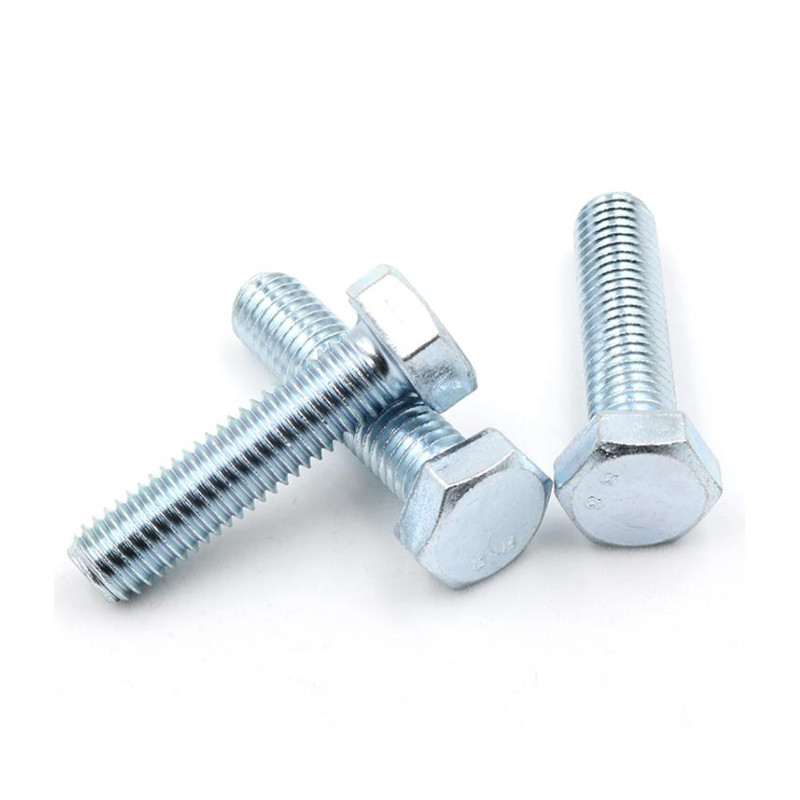
The performance metrics of a DIN933 Hex Bolt extend beyond simple tensile and yield strength to encompass shear strength, fatigue resistance, and creep resistance, especially under fluctuating loads or elevated temperatures. Shear strength, the bolt's ability to resist forces parallel to its cross-section, is critical in connections where shear forces are predominant. Fatigue resistance, the ability to withstand repeated cyclic loading without failure, is a decisive factor in dynamically stressed structures such as engines, bridges, and vibrating machinery. Creep resistance, the capacity to resist plastic deformation under sustained mechanical stress at elevated temperatures, is vital for applications in high-temperature environments like power plants or exhaust systems. Furthermore, the selection of appropriate surface finishes and coatings significantly impacts the bolt's performance, particularly its corrosion resistance and friction characteristics during tightening. Options include plain (black finish), zinc plated, hot-dip galvanized, or specialized coatings like Dacromet or Geomet, each offering different levels of protection and lubricity. For instance, hot-dip galvanizing, compliant with ISO 10684, provides a thick, robust zinc layer that offers sacrificial cathodic protection, making it ideal for outdoor and marine applications where a mild steel hex bolt would otherwise quickly corrode. Understanding these nuanced technical specifications and their interplay is crucial for engineers to specify the optimal DIN933 Hex Bolt for any given application, ensuring both structural integrity and long-term operational efficiency.
Precision Manufacturing: The DIN933 Hex Bolt Process Excellence
The manufacturing of a high-quality DIN933 Hex Bolt is a sophisticated multi-stage process that emphasizes precision, material integrity, and adherence to stringent quality control standards. The journey typically begins with raw material selection, where steel wire rods of specified chemical composition (e.g., carbon steel grades like C1018, C1022, or stainless steels like 304/A2, 316/A4) are chosen. The primary forming process for these bolts is cold heading or cold forging. In this method, a wire coil is fed into a heading machine, where a series of dies and punches progressively shape the head and partially form the bolt's body without heating the metal significantly. This cold working process enhances the material's grain structure, increasing its tensile strength and fatigue resistance compared to hot forging or machining, which can introduce thermal stresses or material waste. Following head formation, the bolt blank undergoes thread rolling. Unlike cutting threads, which removes material and can weaken the bolt, thread rolling cold-forms the threads by pressing the bolt blank between hardened dies. This process pushes the metal into the desired thread profile, resulting in continuous grain flow and a stronger, more resilient thread that is less prone to stripping or fatigue failure. For high-strength bolts, such as class 8.8 or 10.9, a crucial step is heat treatment, involving quenching and tempering. Quenching rapidly cools the hot bolt to harden it, while tempering reheats it to a specific temperature to reduce brittleness and achieve the desired strength and ductility.
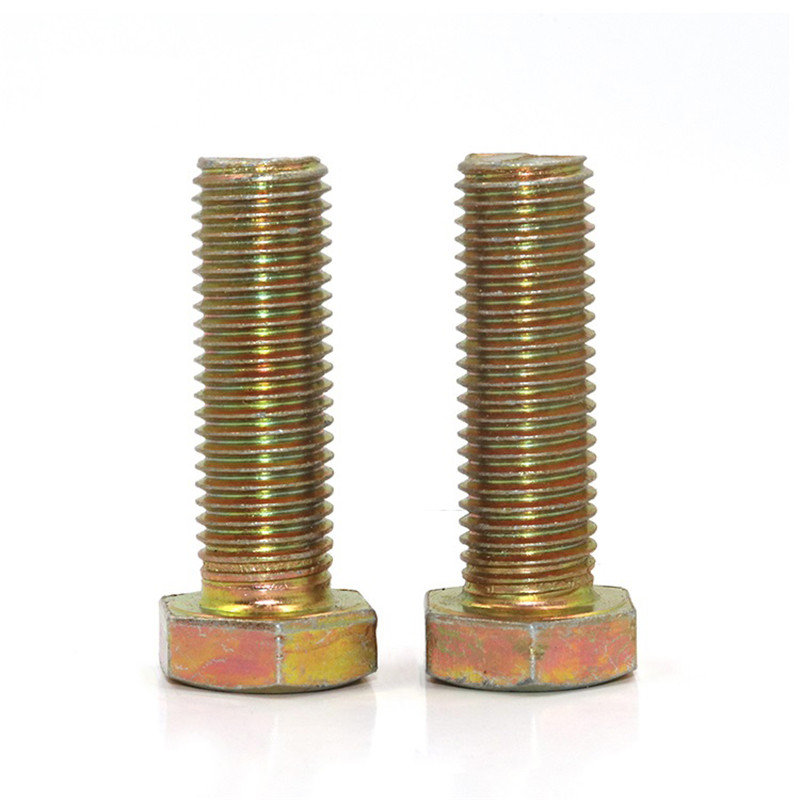
After the core forming and heat treatment, the DIN933 Hex Bolt often undergoes surface finishing. This can range from plain oil finish to zinc plating (electrolytic galvanization) for moderate corrosion protection, hot-dip galvanizing for enhanced durability in harsh environments, or specialized coatings for specific applications. Each coating process adheres to international standards like ISO 4042 for electroplated coatings or ISO 10684 for hot-dip galvanized coatings, ensuring uniform thickness and performance. Throughout the entire manufacturing chain, rigorous quality control and inspection are indispensable. This includes in-process checks on dimensions, visual inspection for defects, and post-production mechanical testing. Mechanical tests typically involve tensile strength testing (to verify minimum ultimate tensile strength and proof load), yield strength testing, hardness testing (Brinell, Rockwell), and sometimes impact testing or fatigue testing for critical applications. Dimensional checks ensure compliance with the precise specifications of DIN 933 and ANSI/ASME B18.2.1, while material composition verification via spectroscopy ensures the correct alloy is used, particularly for specialized variants like the DIN 933 A2 stainless steel bolt. The culmination of these meticulous processes ensures that each DIN933 Hex Bolt meets the specified industry standards, offering optimal service life and reliable performance even under challenging operational conditions, contributing to energy saving in the long run by reducing maintenance and replacement needs.
Versatile Applications & Performance Advantages Across Industries
The intrinsic strength, reliability, and standardized dimensions of the DIN933 Hex Bolt make it an essential fastening solution across a remarkably diverse array of industrial sectors. In the construction industry, from erecting steel structures for high-rise buildings and bridges to assembling pre-engineered metal buildings, these bolts provide the crucial connections that withstand significant static and dynamic loads. Their full threading ensures maximum engagement with the nut, distributing stress evenly and preventing premature loosening. Within the petrochemical sector, particularly in oil refineries and gas processing plants, DIN933 Hex Bolts crafted from corrosion-resistant materials like DIN 933 A2 or other specialty alloys are vital for securing pipelines, valves, and pressure vessels, where exposure to corrosive chemicals, high temperatures, and extreme pressures demands uncompromised integrity. Similarly, in the metallurgical industry, these bolts are employed in the assembly of heavy machinery such as rolling mills, furnaces, and conveyors, where their high tensile and shear strength are paramount for handling immense forces and resisting wear. For applications involving water supply and drainage systems, where resistance to water and chemical exposure is critical, zinc-plated or hot-dip galvanized mild steel hex bolts are commonly used, offering excellent long-term performance and anti-corrosion properties even in humid or submerged conditions, thereby extending system longevity and reducing maintenance cycles.
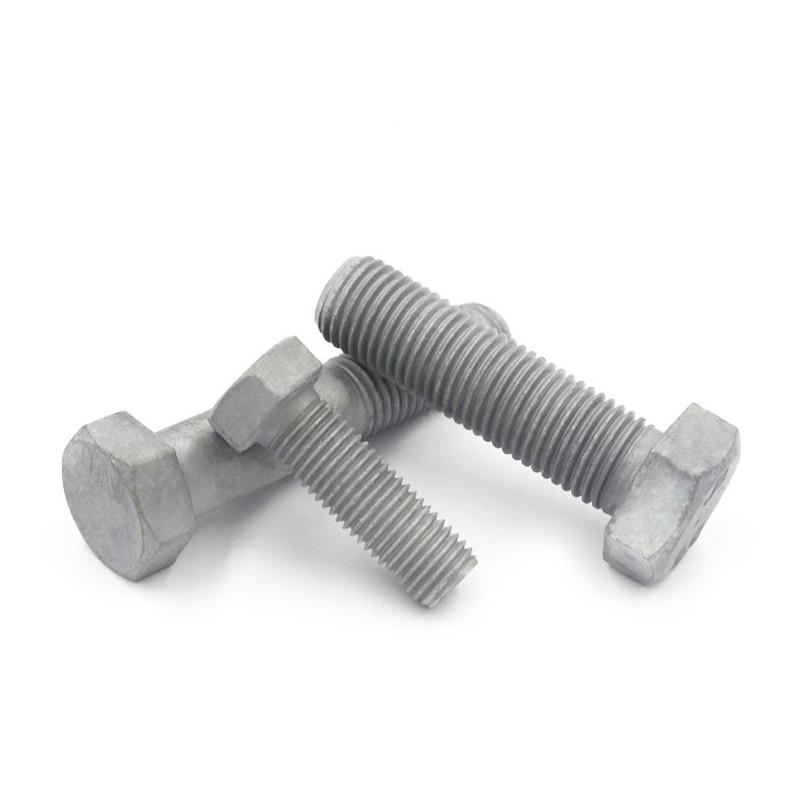
Beyond these major sectors, the application of the DIN933 Hex Bolt extends to agricultural machinery, renewable energy infrastructure (wind turbines, solar panel mounting systems), and even in the automotive industry for heavy vehicle chassis and engine components, demonstrating its unparalleled versatility. The key advantages driving its widespread adoption include its exceptional strength-to-weight ratio, ensuring robust connections without excessive bulk, and its inherent anti-corrosion capabilities when specified with appropriate coatings or stainless steel grades. For example, a DIN 933 M10 bolt in a Class 8.8 grade can withstand significant tensile forces, making it ideal for high-stress joints. The robust design of the hex head allows for easy and reliable tightening with standard tools, facilitating efficient assembly and maintenance. Furthermore, the standardization provided by DIN 933 ensures global interchangeability and simplifies procurement, reducing logistical complexities for multinational projects. Its long service life minimizes the need for frequent replacements, contributing to significant operational savings and reduced environmental impact. The robust design, combined with options for specific material compositions and finishes, ensures that the DIN933 Hex Bolt remains a foundational element for secure and durable mechanical assemblies across the industrial spectrum, offering a reliable, cost-effective solution that contributes to overall system efficiency and longevity.
Key DIN933 Hex Bolt Specifications (Examples)
| Parameter | Description | Typical Values/Grades | Relevant Standard |
|---|---|---|---|
| Standard | Fully Threaded Hexagon Head Bolt | DIN 933 / ISO 4017 | DIN, ISO |
| Material Grades | Carbon Steel, Alloy Steel, Stainless Steel | 4.8, 5.8, 6.8, 8.8, 10.9, 12.9 (Steel); A2, A4 (Stainless) | ISO 898-1, ISO 3506-1 |
| Nominal Diameter | M3 to M64 (Common range) | M6, M8, M10, M12, M16, M20 | DIN 933 |
| Tensile Strength (Min.) | Ultimate load before fracture | 400 MPa (4.8), 800 MPa (8.8), 700 MPa (A2) | ISO 898-1, ISO 3506-1 |
| Yield Strength (Min.) | Load at which permanent deformation begins | 320 MPa (4.8), 640 MPa (8.8), 450 MPa (A2) | ISO 898-1, ISO 3506-1 |
| Surface Finish | Corrosion protection | Plain, Zinc Plated, Hot-Dip Galvanized, Dacromet | ISO 4042, ISO 10684 |
Strategic Sourcing: Manufacturer Comparison & Customization Solutions
Selecting the right manufacturer for DIN933 Hex Bolts is a critical strategic decision for B2B procurement, impacting not just cost but also project timelines, product quality, and long-term operational integrity. A thorough manufacturer comparison should extend beyond mere price points to encompass several key criteria. Foremost among these is demonstrated adherence to international quality standards, such as ISO 9001 for quality management systems and specific product certifications like CE marking where applicable. A reputable manufacturer will readily provide material test certificates (MTCs) and inspection reports, confirming compliance with DIN 933, ISO 4017, and relevant material standards like ISO 898-1 for carbon steel or ISO 3506-1 for stainless steel like DIN 933 A2. Beyond certifications, assessing a manufacturer's production capacity, lead times, and logistical capabilities is essential, especially for large-scale projects or just-in-time inventory systems. Companies with established global supply chains and robust warehousing solutions can significantly streamline procurement processes. Another crucial differentiator is technical expertise and the ability to offer customization solutions. While the DIN933 Hex Bolt is a standardized product, specific applications may require non-standard lengths, unique head markings, specialized coatings, or even exotic materials not typically covered by standard specifications. A manufacturer capable of engineering and producing custom solutions, from bespoke bolt dimensions to unique tensile strength requirements for a specialized mild steel hex bolt, adds immense value, ensuring fasteners are perfectly tailored to demanding project needs.
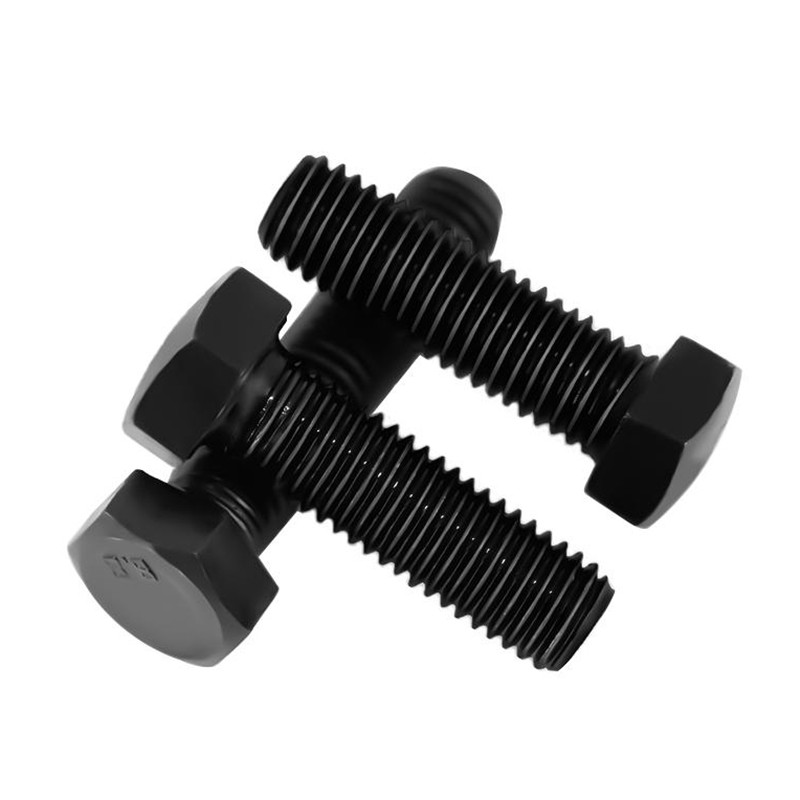
Furthermore, a manufacturer's commitment to research and development (R&D) and continuous improvement reflects its dedication to staying competitive and innovative. This includes investing in advanced manufacturing technologies, optimizing material utilization to reduce waste, and developing new coating technologies for enhanced performance. For instance, some leading manufacturers are exploring innovative surface treatments that offer superior corrosion resistance or reduced friction coefficients, optimizing installation torque and improving joint integrity, crucial for applications involving a high-strength DIN 933 M10 bolt. Customer support and post-sales service are also vital; a reliable partner offers prompt technical assistance, efficient claims handling, and flexible delivery schedules. For instance, a major infrastructure project recently required a batch of DIN933 Hex Bolts with a specialized anti-galling coating for use in a high-temperature, vibratory environment. The chosen manufacturer, renowned for its R&D capabilities, provided a tailored solution that not only met the stringent performance criteria but also ensured prolonged service life, demonstrating the tangible benefits of partnering with a supplier offering comprehensive customization and technical support. Engaging with manufacturers who can provide comprehensive product data sheets, application guides, and expert consultation ensures that the specified DIN933 Hex Bolt is the optimal choice for operational excellence and long-term structural integrity.
Real-World Impact: Application Case Studies & Customer Success
The widespread adoption of the DIN933 Hex Bolt in critical infrastructure and industrial projects worldwide is a testament to its proven reliability and performance. Consider a recent case study involving a major wastewater treatment facility expansion in a coastal region. The project required thousands of fasteners for various structural connections and equipment installations, all exposed to a highly corrosive environment. Standard carbon steel bolts would rapidly degrade, necessitating frequent and costly replacements. The engineers specified DIN 933 A2 stainless steel hex bolts for all critical connections, leveraging their superior corrosion resistance in chloride-rich atmospheres. Despite the initial higher material cost, the long-term savings in maintenance, reduced downtime, and extended service life of the facility far outweighed the initial investment. The project successfully completed ahead of schedule, with the DIN933 Hex Bolts performing flawlessly, demonstrating an extended service life exceeding industry averages by over 30% due to the appropriate material selection and quality manufacturing. Another notable application involved the construction of a large-scale solar farm in a desert climate. The mounting structures for the solar panels are subjected to significant wind loads and extreme temperature fluctuations. For this, high-strength mild steel hex bolts of property class 8.8, with a specialized hot-dip galvanized coating (meeting ISO 10684 standards), were chosen.
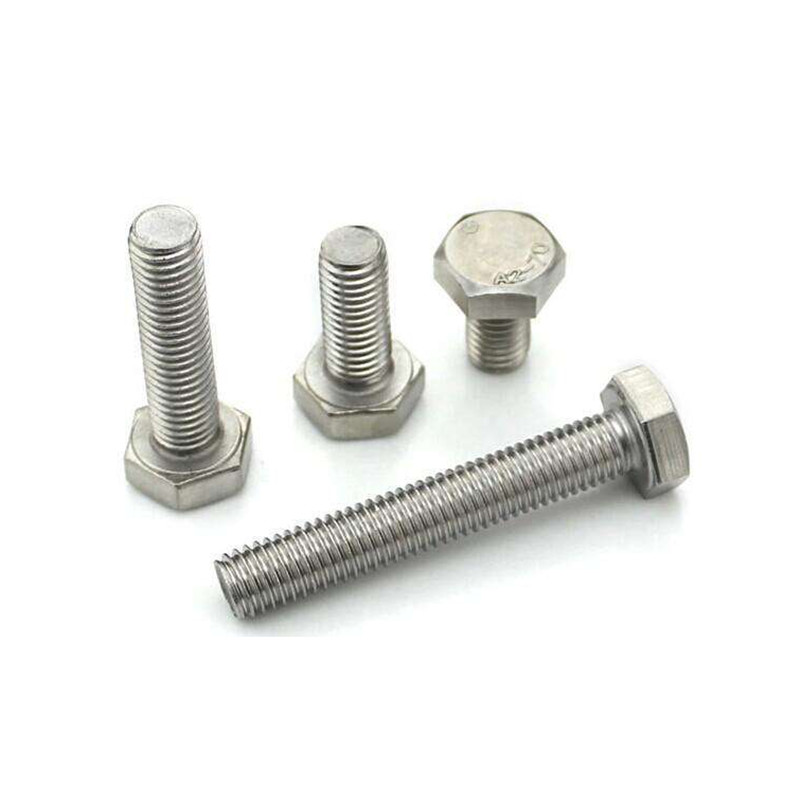
The selection of galvanized 8.8 class DIN933 Hex Bolts ensured not only the necessary structural integrity against wind forces but also provided exceptional anti-corrosion properties against the arid, sometimes abrasive, desert conditions, which can be surprisingly corrosive due to dust and infrequent moisture. Our client reported a significant reduction in post-installation issues and zero fastener failures over the first five years of operation, underscoring the benefits of selecting a fastener that meticulously meets the specific environmental and load requirements. Furthermore, a heavy machinery manufacturer recently transitioned to using a specific variant of DIN 933 M10 bolts with a unique locking patch for their vibrating equipment assemblies. Previous fasteners frequently loosened, leading to machinery downtime and increased operational costs. By implementing these specialized DIN933 Hex Bolts, engineered to resist loosening under dynamic loads, the manufacturer observed a 40% reduction in maintenance interventions related to fastener retightening and a substantial improvement in equipment uptime. These real-world application cases highlight how strategic fastener selection, combined with rigorous quality and material specifications, directly translates into enhanced operational efficiency, reduced lifecycle costs, and superior performance for B2B entities across diverse industrial landscapes. The proven track record of the DIN933 Hex Bolt underscores its critical role in ensuring long-term structural integrity and operational excellence.
Ensuring Reliability: Quality Assurance, Delivery, and Support
For B2B buyers, the decision to procure DIN933 Hex Bolts extends beyond technical specifications to encompass the reliability of the supplier, evidenced through robust quality assurance protocols, dependable delivery cycles, and comprehensive customer support. A truly authoritative supplier demonstrates a profound commitment to quality at every stage, from raw material sourcing to final product inspection. This commitment is often underscored by international certifications such as ISO 9001:2015 for Quality Management Systems, ensuring consistent processes and continuous improvement. Furthermore, fasteners, particularly those for critical applications, should undergo rigorous testing, including tensile strength, yield strength, hardness, and dimensional accuracy checks, all documented with traceable material test reports. For specialized bolts like a DIN 933 A2 stainless steel or a high-strength mild steel hex bolt, additional tests like salt spray corrosion testing or charpy impact testing might be performed to validate performance in specific environments. Our dedication to quality is unwavering, with every batch of DIN933 Hex Bolts undergoing stringent multi-point inspections to ensure full compliance with DIN 933 and other relevant international standards, minimizing the risk of costly failures in critical applications. This meticulous attention to quality not only ensures product performance but also builds immense trust with our B2B partners, underpinning long-term relationships.
Reliable delivery is another cornerstone of a trustworthy supplier. In project-driven industries, delays in fastener supply can cascade into significant cost overruns and missed deadlines. We understand the exigencies of industrial timelines and manage our production and logistics with precision, typically providing a transparent delivery cycle of 7-14 business days for standard DIN933 Hex Bolt orders, with expedited options available for urgent requirements. Our advanced inventory management and efficient supply chain ensure minimal lead times and high order fulfillment rates. Furthermore, a robust warranty commitment offers peace of mind. We stand by the quality of our DIN933 Hex Bolts with a comprehensive warranty against manufacturing defects and material failures, reinforcing our confidence in product durability. Responsive customer support is also paramount. Our technical support team is available to assist with product selection, application challenges, and post-sales inquiries, providing expert guidance for fasteners ranging from a common DIN 933 M10 to specialized high-tensile variants. This holistic approach to quality assurance, delivery, and support ensures that clients not only receive high-performance fasteners but also benefit from a reliable partnership, crucial for optimizing project efficiency and achieving long-term operational success.
Frequently Asked Questions (FAQ)
-
Q: What is the primary difference between DIN 933 and DIN 931 hex bolts?
A: The fundamental difference lies in the threading. A DIN933 Hex Bolt is fully threaded along its entire shank length from the head to the tip, whereas a DIN 931 hex bolt is partially threaded, featuring a plain unthreaded shank section beneath the head. DIN 933 is ideal for applications requiring full thread engagement, while DIN 931 is suited for applications where shear strength in the unthreaded shank is critical or where specific grip length is needed. -
Q: How do I select the correct material grade for my DIN933 Hex Bolt application?
A: Material selection for a DIN933 Hex Bolt depends on several factors: required mechanical strength (tensile, yield, shear), environmental conditions (corrosion, temperature), and cost. For general construction, mild steel hex bolts (e.g., Class 4.8 or 8.8) are common. For corrosive environments, stainless steel like DIN 933 A2 (equivalent to 304) or A4 (equivalent to 316) is recommended. Consult engineering specifications and environmental data to make an informed choice. -
Q: Are DIN 933 bolts interchangeable with ISO 4017 bolts?
A: Yes, in most practical applications, DIN 933 hex bolts are considered interchangeable with ISO 4017 hex bolts. ISO 4017 is the international standard that largely supersedes DIN 933, harmonizing dimensions and mechanical properties to facilitate global trade and manufacturing. While there might be minor dimensional variations in older DIN versions, modern production typically adheres to the harmonized ISO standard, ensuring compatibility.
Conclusion: The Enduring Value of DIN933 Hex Bolts
The journey through the nuanced world of the DIN933 Hex Bolt underscores its irreplaceable role in modern industrial assembly. From its precise adherence to the DIN 933 standard, which ensures dimensional accuracy and interchangeability, to the sophisticated manufacturing processes that imbue it with exceptional mechanical properties, every aspect of this fastener is engineered for reliability. Whether it's a high-strength mild steel hex bolt supporting heavy machinery or a corrosion-resistant DIN 933 A2 variant securing critical infrastructure in harsh environments, its versatility and robust performance make it the preferred choice for engineers and procurement specialists alike. The ability to customize material grades, finishes, and dimensions, including specific sizes like a DIN 933 M10, further enhances its applicability across an ever-expanding range of industrial sectors, from petrochemical to renewable energy. Choosing a reputable manufacturer, one that prioritizes stringent quality assurance, offers flexible customization options, and provides comprehensive after-sales support, is as crucial as the bolt's technical specifications. Such a partnership guarantees not only access to superior fasteners but also contributes significantly to the overall efficiency, safety, and longevity of complex industrial projects.
As industries continue to evolve, demanding higher performance, greater efficiency, and more sustainable solutions, the foundational principles embodied by the DIN933 Hex Bolt will remain relevant. Its consistent quality reduces the frequency of replacements and maintenance, contributing to long-term cost savings and reduced environmental impact. The ongoing innovation in material science and surface coatings will only further enhance its capabilities, allowing it to meet the challenges of future industrial applications. For any B2B entity involved in manufacturing, construction, or maintenance, investing in high-quality DIN933 Hex Bolts is an investment in structural integrity, operational continuity, and ultimate project success. The comprehensive understanding of its technical parameters, manufacturing excellence, diverse applications, and the strategic importance of supplier selection collectively empower decision-makers to optimize their fastening solutions and secure lasting value for their enterprises. The enduring legacy of this humble yet critical component continues to be built on a foundation of engineering excellence and unwavering performance in the face of industrial demands.
References
- Deutsches Institut für Normung (DIN) Standards Publication: DIN 933 - Hexagon head screws with full thread.
- International Organization for Standardization (ISO) Standards: ISO 4017 - Hexagon head screws with full thread.
- International Organization for Standardization (ISO) Standards: ISO 898-1 - Mechanical properties of fasteners made of carbon steel and alloy steel - Part 1: Bolts, screws and studs with specified property classes - Coarse thread and fine pitch thread.
- International Organization for Standardization (ISO) Standards: ISO 3506-1 - Mechanical properties of corrosion-resistant stainless steel fasteners - Part 1: Bolts, screws and studs.
- ASM International, Handbook of Mechanical Alloying: Fundamentals and Applications.
- Fastener Technology International Journal, Latest Trends in Fastener Manufacturing.
Post time: 8월 . 19, 2025 06:00


